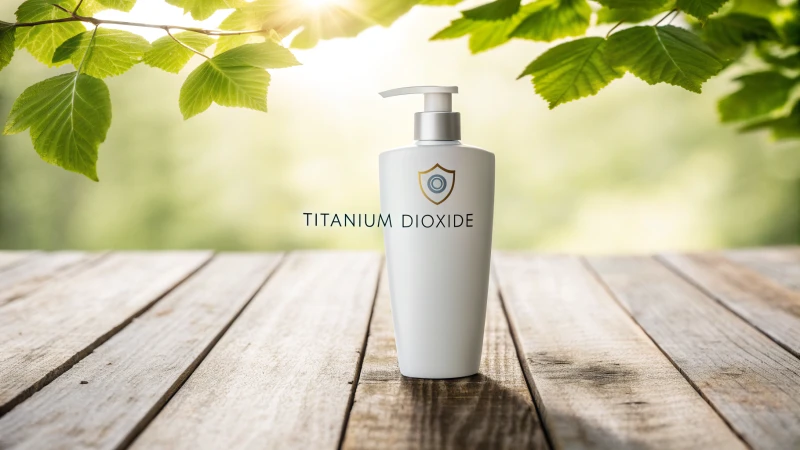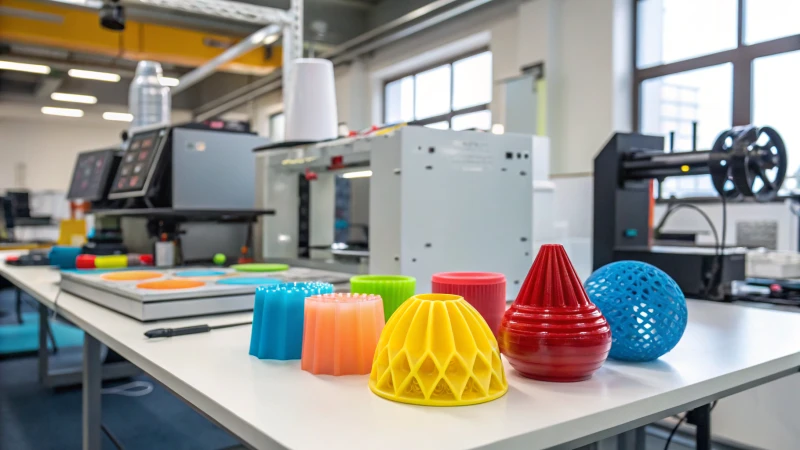
Have you ever wondered if the same compound that brightens your paint could revolutionize 3D printing?
Yes, titanium dioxide can be used in 3D printing materials to enhance properties such as opacity, brightness, UV resistance, and mechanical strength. It is particularly valuable in improving polymers and resins used for 3D printing, as well as playing a crucial role in the production of titanium alloys for metal 3D printing.
Diving into the world of 3D printing, I discovered that titanium dioxide isn’t just for making my walls glow. It’s a game-changer in additive manufacturing too! By enhancing the opacity and brightness of polymers and resins, it makes 3D-printed objects not only functional but also visually striking. Plus, its UV resistance ensures that these creations can withstand the harsh sun, much like my outdoor decor. As someone who’s always been fascinated by the potential of materials, learning about TiO₂’s role in strengthening filaments was eye-opening. Imagine creating prototypes that can handle wear and tear just by tweaking the material’s composition! And let’s not forget its contribution to metal printing; while TiO₂ isn’t directly used, it’s a precursor in crafting those impressive titanium alloys used in high-tech fields like aerospace. It’s like finding out that a familiar friend has hidden superpowers.
[claim claim=”Titanium dioxide enhances UV resistance in 3D printing materials.” istrue=”true” explanation=”TiO₂ improves UV resistance by absorbing and scattering UV light.”]
[claim claim=”Titanium dioxide reduces mechanical strength in 3D printing.” istrue=”false” explanation=”TiO₂ actually enhances mechanical strength when used in 3D printing.”]
How Does TiO₂ Enhance 3D Printing Polymers?
Imagine transforming your 3D printed creations with just a sprinkle of magic powder. That’s how I felt when I discovered the power of titanium dioxide (TiO₂) in 3D printing.
TiO₂ enhances 3D printing polymers by boosting opacity, UV resistance, and mechanical strength. It delivers vibrant colors and durable products, perfect for outdoor projects and robust prototypes.
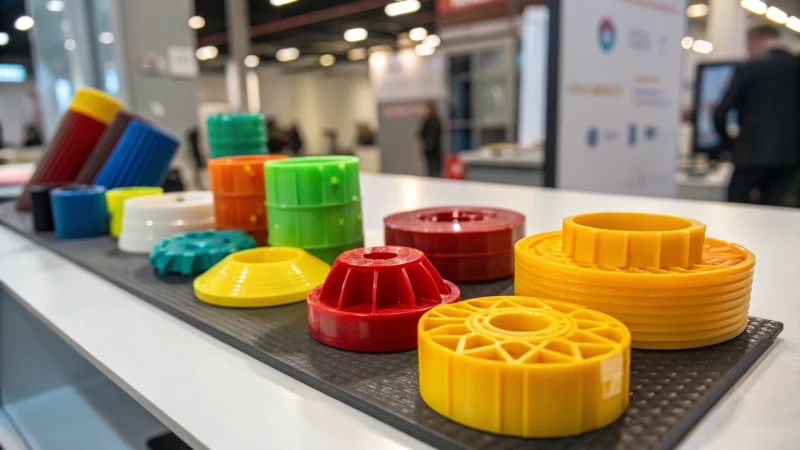
Enhancing Visual Appeal
I remember the first time I added titanium dioxide to my 3D printing polymers, hoping for a splash of vibrancy. The results were stunning! TiO₂ is famous for boosting opacity and color brightness1, turning even the simplest designs into eye-catching masterpieces. Whether I’m crafting intricate models or straightforward prototypes, this magical ingredient ensures that the final product stands out with vivid colors.
| Property | Effect of TiO₂ |
|---|---|
| Opacity | Increased |
| Color Brightness | Enhanced |
Boosting Durability
I can’t forget the time I printed a garden ornament only to see it fade under the sun within weeks. But with TiO₂, my outdoor projects now withstand the relentless sunlight, thanks to its remarkable UV resistance2. Products enriched with TiO₂ not only last longer but also keep looking fresh over time, making it a must-have for all my outdoor applications.
Strengthening Materials
Adding TiO₂ to materials like PLA or ABS has been a game-changer in my workshop. The enhanced mechanical properties—like improved strength and wear resistance—mean that my parts can handle whatever stress or harsh conditions come their way. From crafting functional prototypes to creating end-use components, these stronger filaments have opened up new possibilities for industrial applications3.
- Strength: With TiO₂, polymers achieve higher tensile strength.
- Wear Resistance: Elevated resistance to abrasion and damage.
Potential in Metal Printing
Although I haven’t used titanium dioxide directly in metal 3D printing, its role as a precursor in producing titanium alloys is undeniable. These alloys are essential in industries like aerospace and automotive4, thanks to their lightweight and high-strength nature. Recognizing TiO₂’s significance in the supply chain has given me a deeper appreciation for its contribution to advanced manufacturing processes.
Exploring these facets has shown me how transformative TiO₂ can be, enhancing not just the performance but also the aesthetic quality of 3D printed polymers, meeting the demands of various industrial and consumer applications. It’s like having a secret ingredient that elevates every project to new heights.
[claim claim=”TiO₂ improves color brightness in 3D printing polymers.” istrue=”true” explanation=”Titanium dioxide enhances the visual appeal by increasing color brightness.”]
[claim claim=”TiO₂ is directly used in metal 3D printing processes.” istrue=”false” explanation=”TiO₂ is a precursor for titanium alloys, not directly used in metal printing.”]
How Can TiO₂ Improve the Durability of 3D Printed Parts?
I remember the first time I heard about titanium dioxide in 3D printing—it sounded like something out of a sci-fi movie. Could this compound really make my 3D printed parts last longer?
Absolutely, TiO₂ can significantly enhance the durability of 3D printed parts by boosting their mechanical strength, UV resistance, and overall appearance. This makes it a standout additive in both polymer and metal 3D printing applications.
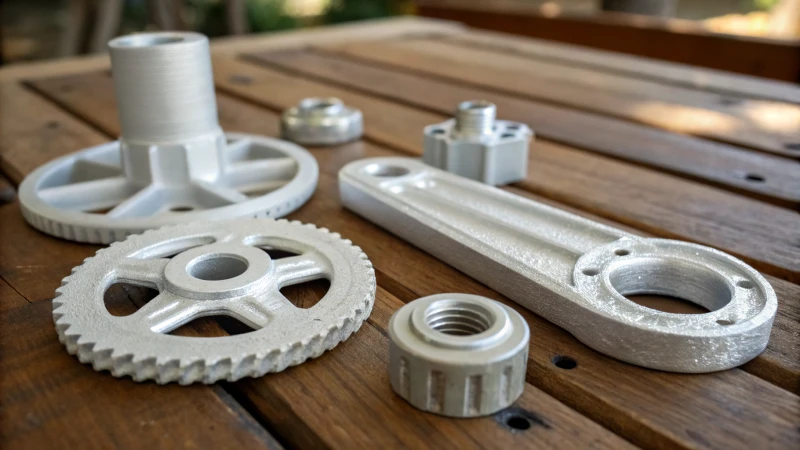
Enhancing Material Properties with TiO₂
When I first started dabbling in 3D printing, I was all about making cool stuff—figurines, custom gadgets, you name it. Then I learned about titanium dioxide’s ability to elevate those creations by improving their look and longevity. TiO₂ is famous for its brightness and UV resistance, turning even the simplest of prints into show-stopping pieces. Imagine your outdoor prints holding their own against the sun’s relentless rays, thanks to TiO₂ keeping colors vibrant and materials intact.
Titanium dioxide, commonly used for its brightness and UV resistance, can significantly improve the visual and protective qualities of 3D printed objects. When used as an additive in polymers5, TiO₂ enhances opacity, making parts more visually appealing.
Moreover, its UV resistance is particularly valuable for outdoor applications. This property ensures that 3D printed parts maintain their color and integrity when exposed to sunlight, significantly extending their lifespan.
Strengthening Mechanical Properties
I’ve always been fascinated by the science of making things stronger. With TiO₂, it’s like giving my prints a secret superpower. By mixing it into filaments like PLA or ABS, my creations become more than just eye candy—they’re also tougher and more durable. Whether it’s a part for a DIY project or something meant for more demanding uses, the added strength from TiO₂ has proven invaluable.
The integration of TiO₂ in 3D printing materials isn’t limited to aesthetics. It also plays a crucial role in improving the mechanical strength of printed parts6. This enhancement is achieved by adding TiO₂ to filaments like PLA or ABS.
Such modifications result in parts that are not only visually appealing but also more resistant to wear and stress. This is especially beneficial in industrial settings where durability is paramount.
| Material | Benefit of TiO₂ Addition |
|---|---|
| PLA | Increased strength and wear resistance |
| ABS | Enhanced durability in harsh environments |
TiO₂ in Metal 3D Printing
While my own 3D printing adventures mainly involve plastics, I’ve read that TiO₂ is a game-changer in metal printing too. It’s not directly used in the print process but is crucial in crafting titanium alloys. These alloys are a staple in industries like aerospace and medicine—fields where every ounce matters, and durability is non-negotiable.
While TiO₂ is not directly used in metal printing, its role as a precursor in the production of titanium alloys cannot be overstated. Titanium alloys often used in aerospace7 and medical fields benefit from the lightweight and high-strength properties imparted by titanium dioxide.
This indirect application illustrates the compound’s significance in advancing metal 3D printing technologies, offering possibilities for creating components that must endure high stress while remaining lightweight.
[claim claim=”TiO₂ improves UV resistance in 3D printed parts.” istrue=”true” explanation=”TiO₂ enhances UV resistance, extending the lifespan of parts outdoors.”]
[claim claim=”TiO₂ is used directly in metal 3D printing.” istrue=”false” explanation=”TiO₂ is not directly used but aids in titanium alloy production.”]
How does TiO₂ impact metal 3D printing?
Imagine transforming how we build with metals, using just a touch of titanium dioxide (TiO₂).
TiO₂ serves as a vital precursor in metal 3D printing, significantly aiding the creation of titanium alloys. These alloys are indispensable for manufacturing lightweight and robust components crucial to industries such as aerospace and automotive.
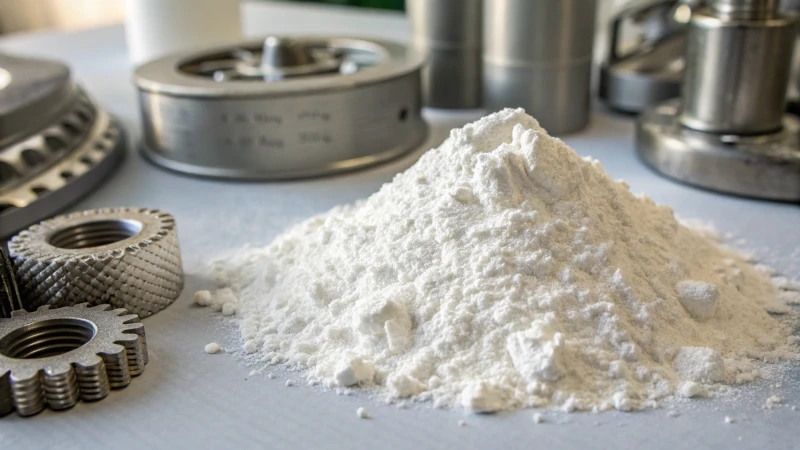
Titanium Dioxide in the Additive Manufacturing Process
I remember the first time I heard about titanium dioxide’s role in 3D printing. I was in a conference room full of eager engineers, each one buzzing with excitement over the potential of this unassuming white powder. In metal 3D printing, TiO₂ is not directly used in the printer but plays a backstage role as a precursor to titanium metal powders. These powders are integral to creating alloys that exhibit exceptional strength and lightweight properties—qualities highly valued in sectors such as aerospace engineering8 and automotive manufacturing, where every ounce counts.
Enhancing Alloy Characteristics with TiO₂
Titanium dioxide is like that behind-the-scenes hero in a movie; its contribution to the synthesis of titanium alloys enhances mechanical characteristics that you can’t see but can certainly feel. These alloys boast increased tensile strength and corrosion resistance, which means they can withstand harsh environments. For example, TiO₂ aids in producing titanium-6aluminum-4vanadium (Ti-6Al-4V), a popular alloy known for its high-performance metrics in medical implants9. The patient’s recovery was noticeably better due to these high-performance metrics.
| Property | Description |
|---|---|
| Tensile Strength | Increases resistance to breaking under tension |
| Corrosion Resistance | Protects against degradation from chemical reactions |
UV Resistance and Durability
Although TiO₂ is primarily known for its use in polymers, its UV resistance also plays a minor yet critical role in metal 3D printing when coatings are applied to finished parts. I recall my team debating how best to protect parts exposed to environmental conditions10, and TiO₂ coatings were the clear winner. They significantly extend the lifespan of components, ensuring they maintain their structural integrity over time.
Future Potential and Research Directions
I often find myself daydreaming about the future—how research into TiO₂ might continue to transform metal 3D printing technologies. There’s ongoing investigation into nanocomposite materials, seeking to harness TiO₂’s properties for innovative applications11 that could push material limits even further. As the field evolves, I’m confident we’ll see breakthroughs that enhance both the efficiency and effectiveness of additive manufacturing processes.
[claim claim=”TiO₂ is directly used as a printing material in 3D printing.” istrue=”false” explanation=”TiO₂ is not directly used; it aids in producing titanium metal powders.”]
[claim claim=”TiO₂ enhances tensile strength in titanium alloys.” istrue=”true” explanation=”It improves mechanical properties like tensile strength and corrosion resistance.”]
What Alternatives to TiO₂ Are Available in 3D Printing?
You know, when I first stumbled upon titanium dioxide in the world of 3D printing, I was intrigued by its magic. But what if there are other materials out there, equally captivating? Let’s dive into some exciting alternatives.
Graphene, carbon nanotubes, and ceramic powders are compelling alternatives to titanium dioxide in 3D printing. These materials offer comparable benefits like strength and UV resistance, while also varying in environmental impacts and cost efficiencies.

Exploring Graphene as an Alternative
I remember the first time I heard about graphene—this material seemed almost too good to be true with its remarkable strength and thermal properties. In the realm of 3D printing12, graphene can significantly boost the tensile strength of materials. Imagine crafting a product that’s not only robust but also ready for industrial challenges.
| Property | TiO₂ | Graphene |
|---|---|---|
| Strength | Medium | High |
| Cost | Low | High |
| UV Resistance | High | Medium |
While it might seem like a splurge due to its high cost, I believe that graphene’s potential, especially in industries like aerospace and automotive13, is truly exciting.
Carbon Nanotubes: A Viable Contender
Then there are carbon nanotubes, which I find fascinating because of their impressive electrical and thermal conductivity. Integrating them into 3D printing materials means achieving superior mechanical properties14. Think about it—they’re perfect for making electronics and structural components!
Their ability to be dispersed within polymers leads to improved material performance without the high cost associated with graphene.
The Role of Ceramic Powders
Ceramic powders like alumina or zirconia are also capturing attention. They bring excellent heat resistance and durability to the table, which is perfect for high-temperature applications15 like engine parts or medical devices.
| Material | Heat Resistance | Durability |
|---|---|---|
| TiO₂ | Medium | Medium |
| Ceramic Powders | High | High |
I’ve noticed that ceramics have a lower environmental footprint compared to traditional metal-based additives, which is a significant consideration in today’s eco-conscious world.
Environmental Considerations
As I explore these alternatives, I’m always thinking about their environmental impacts. Sustainable 3D printing16 focuses on minimizing waste and reducing our carbon footprint. Although biopolymers or recycled composites are still catching up to TiO₂’s performance, they offer promising eco-friendly benefits.
In this ever-evolving field of 3D printing, the search for alternative materials that can match or even surpass the capabilities of TiO₂ continues. It’s a balancing act—one where we weigh performance, cost, and environmental impact. And for those of us deeply invested in additive manufacturing, it’s an exciting journey.
[claim claim=”Graphene has higher tensile strength than TiO₂.” istrue=”true” explanation=”Graphene’s exceptional mechanical strength surpasses TiO₂, enhancing materials.”]
[claim claim=”Ceramic powders have lower heat resistance than TiO₂.” istrue=”false” explanation=”Ceramic powders offer high heat resistance, exceeding that of TiO₂.”]
Conclusion
Titanium dioxide enhances 3D printing materials by improving opacity, UV resistance, and mechanical strength, making it valuable for both polymer and metal applications in various industries.
-
Learn how TiO₂ enhances color brightness, making your 3D prints visually stunning with vivid hues. ↩
-
Discover how UV resistance from TiO₂ extends the lifespan of your outdoor 3D printed projects. ↩
-
Find out how stronger materials with TiO₂ withstand stress, crucial for industrial use. ↩
-
Explore the significance of titanium alloys made with TiO₂ in critical sectors like aerospace. ↩
-
Discover how TiO₂ enhances polymer properties like opacity and UV resistance, making them ideal for various applications. ↩
-
Learn how adding TiO₂ to filaments like PLA boosts strength and durability. ↩
-
Explore why titanium alloys are crucial in aerospace, thanks to their strength and lightweight nature. ↩
-
Explore how titanium alloys are utilized in aerospace engineering for their lightweight and high-strength properties. ↩
-
Learn about the role of titanium alloys in creating durable and biocompatible medical implants. ↩
-
Discover how UV-resistant coatings protect metal components from environmental degradation. ↩
-
Investigate emerging uses of nanocomposite materials, including TiO₂, in 3D printing innovations. ↩
-
Discover how graphene can enhance mechanical properties in 3D printing applications. ↩
-
Learn about graphene’s role in strengthening materials used in aerospace industries. ↩
-
Explore the use of carbon nanotubes to improve electrical and mechanical properties. ↩
-
Find out how ceramic powders enhance heat resistance in 3D printing materials. ↩
-
Learn about sustainable practices and materials in the evolving field of 3D printing. ↩




